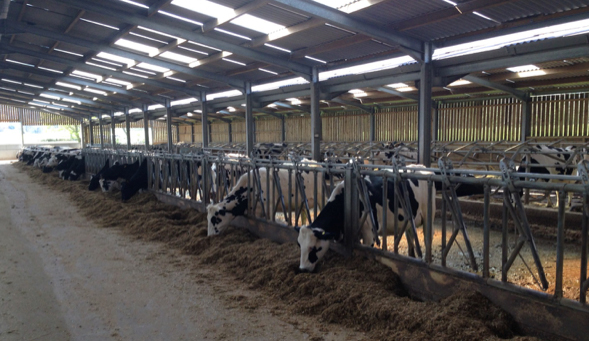
When housing cattle, it is a good opportunity to re-set the clock for some parasites such as liver fluke.
However, for others such as lice and mange, it is an ideal environment for them to spread. Knowing which parasites will be present and understanding their lifecycles is essential if we are to maximise the parasite control opportunities available during the housing period.
Using the most appropriate products at the correct time during housing is essential to maximise the effect of each treatment and achieve the overall parasite control objectives.
Liver Fluke
There are two main goals when treating animals for liver fluke:
1- Prevent/treat disease;
2- Decrease pasture contamination for the following season.
At housing time, knowing what the likely fluke challenge at pasture has been, in relation to previous fluke treatments given (while at pasture) is critical in deciding which fluke treatment to use and when. Flukicides kill liver fluke at different stages of maturity so knowing what stages are likely to be present is crucial.
When deciding on treatments during housing, it is important to assess the risk of disease.
When animals are housed from ‘fluke risk’ pasture it is likely that all stages of fluke, from early immature to adult, will be present in the animal at the time of housing. In circumstances where there is risk of disease from early immature and immature fluke, treatment with triclabendazole (TCBZ) two weeks after housing is warranted.
If animals have been housed from a ‘low challenge’ pasture (i.e. there are likely to be only relatively small numbers of fluke present in the liver at housing) the decision may be to delay treatment until the fluke are at a stage where there will be a choice of actives that are effective (see table).
The risk of waiting to treat is that while fluke are present in the liver, production losses will occur, dependent on the number of fluke present. If treatments are given immediately on housing, regardless of which active is used, there will be some fluke that are too young to be killed by that active. These will survive and, depending on numbers, cause production losses and/or liver condemnations at slaughter.
This detail is overlooked by a number of farmers every year who experience liver condemnations after treatment at housing, so it is important to make sure we are clear on the expectations of each product at the time of prescribing to avoid disappointed farmers.
We talked earlier about re-setting the clock with fluke during housing and the way to achieve this is to check whether any liver fluke are still present before turning the animals out.
This can be done via a mob faecal egg count or copro-antigen test (individual samples) of management groups. If any cattle are being slaughtered the farm can request a report from the abattoir.
If livers have been condemned, it is important that they ask whether this was due to the presence of live liver fluke or old fluke damage. If there are still fluke present this does not mean the first treatment necessarily failed (remember no product has a 100% efficacy claim).
It is important to retreat these animals before turn out to prevent or reduce pasture contamination with fluke eggs for the following season. Provided that animals have been housed for at least 10 weeks, only adult fluke should be present, and the pre-turnout treatment can be chosen to target adult fluke (see table). This ideally should be different from the active previously used.
Treatments during the housing period are unlikely to contribute significantly to the development of resistance to any of the available actives if best practice guidelines are followed, as no eggs will get out of the house onto to the pasture. There is no concrete evidence to say whether fluke eggs will or will not survive in slurry or bedding, although it is generally considered that there is a very low risk of survival.
Dairy cattle
We also have the added complexity for control programmes for dairy farmers due to the limited number of products licensed for use in cows producing milk for human consumption. Realistically dairy farmers will only have one chance to treat their milking cows for fluke in a year (at drying off). Therefore the choice of active will depend on the time of year, whether the animals are housed and the length of time since housing. This reinforces the point that the choice of active has to be determined at an individual farm level to maximise the fluke control on the farm.
Ectoparasites
Lice and mites are the main ectoparasites of concern in cattle during housing. Treatment choices are limited to either synthetic pyrethroids (pour-ons) or macrocyclic lactones (pour-on and injectable).The product prescribed will depend on the type of ectoparasite, the length of cover required and the meat or milk withdrawal periods.
Later in the housing period a wormer is often not needed.
Using SP pour-ons to control lice and mange is a way to reduce the use of ML pour-ons on farms where they are routinely used throughout the year, primarily to control worms. Flypor also has a short meat withhold of 3 days so can be useful when cattle are close to slaughter. If lice are a problem, it is a good idea to assess the general health and condition of the animals.
Housing provides a unique opportunity when it comes to parasites control. It is a chance to look into treatment protocols and decide on objectives for parasite management. These choices will depend on risk of disease, previous treatment and future management options. Effective parasite management revolves around using the right product at the right time.
